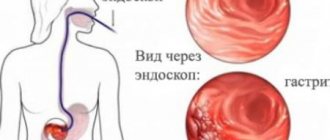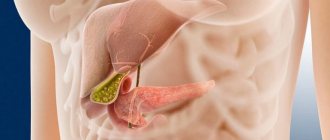Gastritis is a fairly serious pathology that affects the gastrointestinal tract. In treatment, it is important to follow an integrated approach: take medications and follow a special diet. This is especially true for those products that we eat every day, for example, bread. What kind of bread is good for gastritis? Black with a slight sour taste, fluffy white or diet bran? Fresh or stale? We answer your most pressing questions.
Eating bread for acute gastritis
When an acute process develops, the first days are fasting, after two days they eat exclusively liquid food in the form of jelly, porridge and broth. After a week, foods are selectively added to the diet. During this period, you need to be careful with your stomach and not eat foods that inflame the mucous membrane.
You should not consume fresh bread, which develops bloating and damage to the mucous membrane, increasing the secretion of gastric acid. For a similar reason, rich foods are excluded: pies, buns, cookies.
Gastritis of the stomach
Whole grains are the healthiest
If the packaging indicates that the bread is whole grain, made using whole grain flour, it means that they have a high level of ash content, a lot of fatty acids, and dietary fiber. These breads are considered the healthiest. Whole grain flour, for example, is characterized by a high content of microorganisms, among other things, which contribute to the preservation of nutrients, but also interfere with the preservation of the product.
The bread is prepared in an extruder. This is a special device that provides heat treatment of cereals under high pressure and high temperature. The grains are processed for a few seconds. This method, of course, greatly changes the natural characteristics, destroys microorganisms, destroys micro- and macroelements, but only partially. The human body cannot digest grains without any processing. Nutrients will not be absorbed. The grains will be eliminated from the body earlier, as something extra. Processing is needed, and the use of an extruder is important.
The shelf life of bread is one of the indicators of the degree of preservation of the original characteristics of cereals. The larger it is, the more seriously the manufacturer took the processing. Whole grains are processed delicately and are usually stored for 3 months, 6 months. They are similar in appearance to the famous dish - popcorn.
Sometimes the packaging indicates a longer shelf life: 12, 18 or 24 months. At the same time, the product itself resembles cookies in its consistency. The grains were thoroughly ground. These breads contain fewer nutrients, but are easier to digest. Crispbreads perfectly complement dietary dishes, salads, snacks, decorate the table, enrich the diet, add variety to the menu, taking care of human health. It's definitely worth buying them.
Bread for chronic gastritis
Chronic gastritis (CG) occurs with increased, normal and decreased secretion. For each type of disease, the diet is different.
Gastritis with decreased secretion
This type of disease is characterized by a tendency to stagnation in the stomach due to difficulties with digestion and increased gas formation.
During the stage of severe exacerbation, it is recommended to avoid baked goods due to the damaging effects of dietary fiber and large amounts of carbohydrates.
If an exacerbation occurs without severe symptoms, on the 3-4th day it is possible to introduce yesterday’s wheat bread into the diet.
If there is a tendency to diarrhea, it is allowed to eat crackers made from wheat flour or stale white bread made from premium flour.
When the condition has stabilized, wheat bread made from grade I and II flour, baked savory products with lean meat and cottage cheese are recommended.
Gastritis with normal or increased secretion
Frequent symptoms of the pathology are heartburn, regurgitation, stomach pain.
For gastritis, eat yesterday's or stale bread. Wheat is baked from grade I flour. Before use, the product is cut into pieces and dried. Crackers should not be consumed in large quantities. Dry pieces are placed in slimy soups and puree soups.
If you have gastritis with high acidity, you should not eat baked goods due to stimulation of hydrochloric acid secretion and damage to the mucous membrane.
About crackers and crackers
It is crackers that are recommended for gastritis as bread products. True, not beer croutons, which are generously sprinkled with salt and spices, but the most ordinary ones, wheat or rye-wheat without additives.
If the acidity is low or zero, only wheat products are allowed. Rye - excluded.
The main advantages of crackers compared to bread products are as follows:
- Low humidity.
- Significantly reduced calorie content.
- Easy to digest product structure.
To eliminate traumatic properties, it is recommended to soak crackers and crackers for gastritis, just like bran. You can pour them with broth or yogurt, or even add them to porridge - you will retain the nutritional value of the product, and your stomach will easily cope with them.
Not all types of bread are suitable for patients with gastritis. Barley and wheat are allowed, rye is contraindicated. Rice, buckwheat, and corn bread can be consumed, but in limited quantities, no more than 100 grams per day and in soaked form. Variations - breads with filling and various additives are best excluded. The best choice is dietary wheat bread.
When purchasing, pay attention to the composition of the product - there should be no preservatives or stabilizers that harm a sore stomach. The shelf life of the bread is also important - for a patient with gastritis, those that are stored for 6 to 12 months are suitable. These products are better crushed, so they will not injure the mucous membrane.
If you choose between bread rolls and wheat crackers, we would recommend crackers.
Flour products for patients with gastritis should be limited and can be consumed only when there is no exacerbation. What can replace this necessary and so familiar food product for many? An excellent alternative to bread can be crackers and crispbread.
The technology for preparing bread makes them an indispensable product for many diseases. But when choosing bread rolls, you should pay attention to the fact that they do not contain an excess of various additives. You can only eat a product that contains only first and second grade flour, water, salt, sprouted wheat grain, bran, and malt.
Fresh bread products can also be replaced with crackers. They can be homemade or industrial, the main thing is that they do not contain any flavoring additives. The process of drying bread improves its tolerance by the body, and people with stomach disorders can safely eat large quantities of crackers.
You shouldn’t completely give up bread if you have gastritis; you can and should eat it, but it is important to observe moderation and be careful during attacks of acute gastritis and during exacerbations of chronic gastritis. Preference should be given to crackers, crispbreads and dried bread, and eat other varieties not often and not a lot. By listening to these tips, you can diversify your menu during illness.
Types of bread
Bread is baked from various flours with the addition of spices, seasonings, dried fruits and seeds.
Rye bread
It is baked from rye flour, which contains a lot of useful substances. If there is an exacerbation, you should not eat the product.
Reasons for the ban:
- mechanical damaging effect;
- long stay in the stomach;
- stagnation.
During remission of chronic gastritis, a minimum of bread made from medium-grade rye flour is allowed. The product cleanses the intestines and improves the functioning of the gastrointestinal tract.
Bran bread
Bran is the hard shell of the grain. Bread with bran is not recommended for gastritis. The product damages the mucous membrane and, if consumed regularly, increases the risk of developing ulcers.
Black bread
Thanks to the ingredients, black bread acquires a sour taste and becomes unsafe for patients with gastritis.
The product is harmful to patients with gastritis with high acidity.
Reasons for negative impact:
- stimulates the production of hydrochloric acid;
- contains carbohydrates that promote fermentation and increased gas formation;
- with low acidity, it stays in the stomach for a long time.
White bread
If white bread is made from butter dough, gastritis worsens when consuming the product. Hot bread is harmful, the product damages the mucous membrane and causes fermentation. The reasons for the contraindications are similar to black bread.
If white bread is prepared without adding yeast, it is acceptable to eat for gastritis. The only caveat is that before this, the bread is dried or eaten from yesterday.
You should not buy ready-made crackers; during preparation, harmful additives and spices are added to the product.
Bread
The ability to eat the bread depends on the composition. Gastroenterologists believe that the product should not be consumed; the rough structure damages the stomach.
It is allowed to eat in small quantities and during stable remission. But it is better to choose extrusion products without additives.
Pros of bread:
- consist of easily digestible grains;
- do not contain yeast;
- contain coarse fiber;
- contain natural vitamins and minerals;
- cleanses the stomach of toxins.
Types of permitted flour products
Countless varieties of products combine two ingredients - flour and water. Different peoples of the world are known for their own recipes. The most common additives are: yeast, eggs, milk, spices.
Chronic diseases of the gastrointestinal tract require adherence to a diet throughout life with rare indulgences. It is recommended to eat products made from flour of grades I and II, according to freshness - yesterday's or stale. Gastritis of almost any form allows the following types:
Bread
An excellent alternative to conventional flour products, made without the addition of yeast. Crisps for gastritis become a desirable food due to their low calorie content. They are rich in vitamins, coarse fiber, and minerals. This yeast-free bread cleanses the walls of the stomach, protects the mucous membrane, and is quickly absorbed by the body. You should avoid this product if it contains a lot of chemical additives.
The beneficial properties of the product puzzle acutely ill patients - whether they can have bread. During this period, all food should be pureed, liquid, mushy, especially for foods containing fiber. For gastritis of other forms, you can eat this product instead of regular bread, but in limited quantities - no more than 100 grams per day.
Crackers
Drying bread products improves their digestibility and tolerance by the body. The acidity level of crackers is reduced to zero compared to fresh bread. Eating a solid product provokes more saliva production, improving digestion.
It is important to know! Patients are allowed to consume crackers from all types of flour products, except Borodino.
You should buy or prepare dried bread yourself without additives. It is better to eat them accompanied by liquid food and drinks. Crackers can be consumed by patients with gastritis of any form and type, except for the first days of exacerbation.
White bread
The possibility of its use is very controversial for any form of stomach disease. White bread is considered the safest type of flour products. It is recommended to eat it dried or fresh. Fresh flour products contain a lot of fiber, which the stomach is unable to digest successfully. The result is heaviness, flatulence, and heartburn. It is forbidden to eat a hot product that causes fermentation in the diseased organ.
General recommendations
To understand which bread is allowed for gastritis, when purchasing, you need to carefully study the ingredients:
- bread with bran is contraindicated for gastritis;
- if the composition includes raisins, dried apricots, and seeds, then it is advisable to refuse such a bakery product;
- yeast bread should not be eaten;
- if you choose between rye, white, black bread and crispbread, preference is given to the latter;
- rye bread is not recommended for gastritis;
- wheat bread is consumed in the form of homemade crackers.
When purchasing a baked product, monitor the additives, starch, yeast, salt and spice content.
Product benefits
Today everyone knows about the dangers of bread, but not many know about the benefits:
- Bread products are rich in fiber, which improves the proper functioning of the digestive tract.
- Thanks to the carbohydrates contained in bread, the human body receives energy.
- The products are rich in vitamin B, which calms the nervous system.
- The product contains protein and amino acids that help keep muscles and body toned.
Bread for gastrointestinal diseases
There are certain dietary rules for treating or preventing the disease. For example, during an exacerbation of gastritis, eating flour products is strictly prohibited. In the first days, they adhere to a strict diet, and liquid food is gradually introduced. Only then, after the condition has normalized, can you eat flour products, but in small quantities.
Gastroenterologists identify ingredients that should not be present in proper flour products:
- starch;
- margarine;
- leavening agents;
- dyes;
- preservatives;
- sugar;
- vegetable fat.











